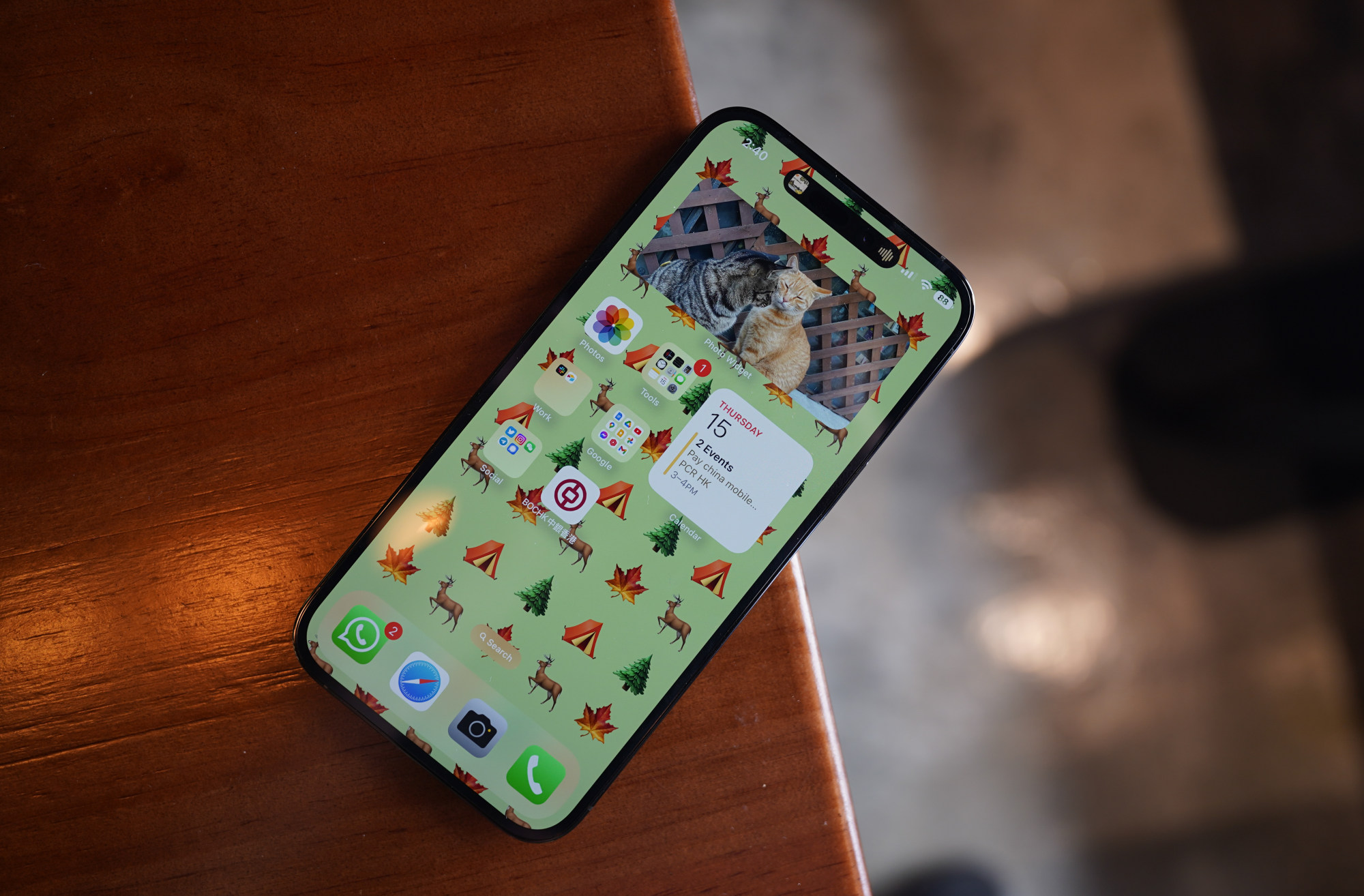
Apple iPhone 14 Pro and Pro Max first look: Dynamic Island, 48-megapixel camera and improved display – all fuelled by the powerful A16 chip
- iPhone’s infamous notch is replaced by the ‘Dynamic Island’, a new software-hardware hybrid way of displaying information like Uber locations and sports scores
- Pixel-binning accommodates a huge camera upgrade, while the Always-On display is more visible in the sun. The new A16 chip blows Androids out of the water
The often-mocked iPhone notch – that black indentation above the display that has housed the top speaker, camera and facial recognition technology in recent models – is dead, at least in the top-end iPhones.
Released on September 16, 2022, in Hong Kong and around the world, the iPhone 14 Pro and Pro Max introduce a new way to house Apple’s TrueDepth facial scanning system.
At first glance, it’s just a longer version of the hole-punch cut-out seen in virtually every Android phone, but while Android brands have always shied away from highlighting this screen “imperfection” (some try to hide it in marketing materials while others offer a digital bezel to hide the hole), Apple is embracing it by designing a new user interface around, and on, the cut-out.
Awkwardly named “Dynamic Island”, it is a new way to display contextual information, and Apple’s software uses digital black bars around the cut-out to make it appear to morph in size while doing so.

Play a song on Spotify, for example, and the island will show the album art on one side while a sonic visualisation bar thumps to the beat on the other. Start a timer, and the countdown clock shows up on the island. With third-party support, it will soon be able to show the location of your Uber ride, or a live sports score.
Does this fundamentally change how we’ll use our iPhones? Probably not. But it’s a clever UI element that displays information in an unobtrusive manner. In addition to this new feature, there are also three other key upgrades.

Cameras
The iPhone 14 Pro and Pro Max both get a new 48-megapixel main camera that uses pixel-binning technology – a process that combines data from multiple pixels into one – to produce a 12-megapixel image with four times more pixel information.
The ultra-wide camera also sees an increase in sensor size. Both of these changes mean the new cameras fare better in challenging lowlight conditions.

Display
The 120HZ OLED screen on the new iPhone Pro and Pro Max is a breakthrough for Apple, with a maximum brightness of 2,000 nits, and the most energy efficient low-brightness mode of any iPhone.
The former will help you see the iPhone screen better under harsh sunlight, and the latter is used in the new Always-On Display feature.
Samsung Galaxy Z Flip 4 vs Motorola Razr: flip phone showdown
While Android displays crucial information when the phone is not in use through simple text on a black screen, Apple’s Always-On Display dims the lock screen, meaning you can still see your wallpaper and widgets even when the phone is locked and in sleep mode.
I find it a bit distracting – the phone is locked but I can still see my wallpaper – but it’s an impressive flex of hardware-software synergy by Apple to be able to build a screen that’s literally always on, without suffering noticeable battery drain.

Silicon
The overall feel of the new high-end models is similar to that of the last two Pro Max iPhones: the back design, flat stainless steel sides, and overall dimensions remain identical. This is a bulky, imposing device that feels less like a gadget than a powerful mobile computer.
The Dynamic Island is the most noticeable new feature, and seemingly the big selling point of the new devices – as the first mobile UI system that incorporates elements of hardware and software working hand in hand. It once again shows Apple’s tendency to zag while Android brands zig.

